- Introduction
- Services
- Solutions
- Tax Breaks and Incentives
Energies and Technologies of Energy Saving
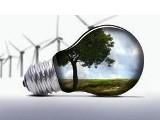
Primary non-renewable energy resources
The primary energy resources, called “non-renewable”, are those which need very long time to compose, related to length of human life. They are higher than the current rate of consumption. In particular, they come from fossil or mineral sources, such as petrol, carbon, natural gas or uranium (nuclear energy).
Primary renewable energy resources
Those comes from energy sources that can regenerate in short time, or anyhow in shorter time related to the length of a human generation. Water, sun and wind are available and don’t need human retrieval, because we attend just for their transformation. The only bond is the time and the place when becomes available.
Primary energy resources (Biomass)
For their nature, Biomasses, that is wood, vegetables and substances of animal origin, are available in short time. Even organic and inhorganic waste are included in the renewable energies, and are used for the district heating or else to produce electrical energy.
Electrical Energy (derivative)
Although exist in nature, electrical energy cannot be utilised for human purposes until its transformation from various primary energies. Human uses fossil, mineral or renewable sources to produce electricity.
Today we dispose of high efficiency technological solutions, that allows the heating or the cooling of the buildings without using just the traditional fossil fuels, but also the "clean" energies. Those energies comes from renewable sources and at the same time improve the comfort of the internal environments.
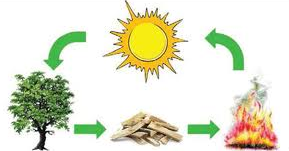 Biomass Heat Generators
Biomass Heat Generators
They’re the last evolution of the oldest way to heat up and uses the biomasses, our nearest renewable energy.
Biomass, in that case, means not only the wood, but also pellet and woodchips, which comes from wood processing waste. Woodchips are scraps of various dimensions, pellets are small compressed sawdust cylinders.
These heat generators are similar to traditional boilers, to which is added a biomass tank. The dimensions of that tank are calculated according to the kind of combustible and the power of the boiler. The supply is totally automatic, you just have to ensure that the combustible stockpile is plenty and the machine will self provide to put it in the combustion chamber, according to the needs of the building.
A biomass boiler reaches the 93% of the total efficiency, equal to that of the traditional ones.
The same kind of biomass is used in fireplaces and thermostoves. These are elegant furnishing elements created with the purpose of an efficient heating and can also be attached to air or water systems.
The pollution is very poor, because the CO2 that goes in the air (principal cause of the global warming) is the same absorbed from a plant during his life cycle.
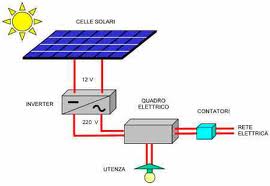 Solar PV Systems
Solar PV Systems
Today, transforming solar light to electrical energy is a great business, for us and for the environment.
The photovoltaic system is composed by a different number of panels, also called PV modules (the number of those changes according to demands and possibilities) and by an inverter. Electrical panels and counters complete the system.
The panels, realized with particular kind of materials, uses the photovoltaic effect to convert the solar energy into electrical energy.
Inverter's job is to convert the direct current produced by the panels into alternate current that can be utilised or sold to the national electricity grid.
For example, an 8mq of well oriented PV panels, produces almost 1200 Kwh of electrical energy in one year. However, it's good to think that it's not possible to be completely self-sufficient with a photovoltaic system.
Gathering energy during the day and then using it by night is expensive, so the connection with the national electricity grid is maintained according to a scheme of energy exchange. Some kind of big PV systems are expecially made for selling the energy they produce and are configured like real photovoltaic energy power plants.
The PV systems mountable on our rooftops are a secure and profitable investment that make us real protagonists in the production of clean energy.
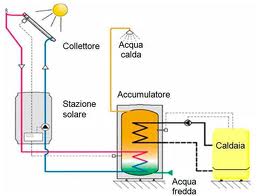 Solar-Thermal
Solar-Thermal
Obtaining sun’s heat in a way more efficient than the past, allows us to save money in the energy bill and respect the entire environment.
A solar-thermal allows to heat the water intended to sanitary uses, and in some cases also the water used to warm up the interior rooms. This allows you to limit the use of the heat generator (boiler or heat pump) and save more combustible or electrical energy.
The system is composed by an appropriate number of tubes, called panels, a warmed up water accumulator and a solar station that rules and controls the entire system. When the panels become irradiated by the sun, the carrier fluid which flows inside warms up and gives heat to the water while circulating inside an heat exchanger, situated in the accumulation. So, the water is warm and ready to being used.
The solar-thermal system will be correctly dimensioned and built, otherwise you can risk some malfunctions. The biggest error is to exaggerate with the number of panels and the dimensions of the accumulation, with the intention of "maximize" the solar energy exploitation.
It's impossible that the sun gives us sufficient energy to completely satisfy our sanitary or heating warm water requirements: the attachment of the accumulator to the main heat generator is an integration that allows us to have the necessary heat even in periods when sun energy is poor.
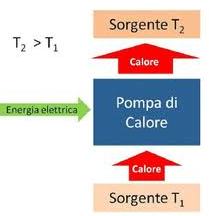 The Heat Pump
The Heat Pump
Heat transferring is cheaper than heat generating: especially taking the heat for free.
The Heat Pump is a thermal machine able to transfer heat from a source (principally air, water or ground) to the air in the interior locals or to the water which flows in the tubes of the system.
This may seem a natural fact, but it’s interesting to consider that the heat pumps work by taking heat from sources with less temperature and transferring it to users at higher temperatures.
A thing that seems even more strange, but real, is that the pump is able to take the heat from a source with a temperature of 12°C and use it to warm some water up to 50°C, using about 1/5th of the energy than a normal boiler uses for the same purpose.
The heat pump works like the traditional direct expansion air conditioners, which cools the locals, moving the heat contained in the air to the external.
The whole operations made by the pump is called refrigeration cycle. A compressor, an air capacitor and an evaporator works together in that cycle.
The operation of a heat pump can be reversed, so you can use the same winter heat system to cool during the summer season (this can be made bringing some little modifications).
Some heat pumps uses the external air as source in winter, while in summer as an heatsink for the heat absorbed in the interior rooms. Some other uses water from a river, a lake or a layer as a source.
Heat pump's technology is rising, because the evolution of the technologies allow us to build increasingly efficient machines, which work even when the external temperatures are very low.
FOCUS: Geothermics
The geothermal is a kind of heat pump that withdraws heat from the underground to warm up sanitary water or internal locals. In summer, while working reversed, picks up the heat from the internal rooms and disperses it in the underground.
This system’s got underground probes, vertical and horizontal, and through them does the heat exchanging. Even the heat pump is installable in the underground, and so allow a minimum obstruction.
How’s that possible? At a certain dept the ground has got constant temperature in all seasons. Geothermics uses this property as an excellent heat source in winter season, and as an excellent heat sink in summer. This systems improves when there's a layer that facilitates the heat exchange.
Controlled Mechanical Ventilation - CMV
More energy efficiency in efficient buildings.
The system takes the external air and forces it through the recovery unit, where it's filtered and cooled (in summer) or warmed (in winter).
The stale air went from the inside aspirated, and then, passing first through the recovery unit, expelled outside. The unit allows the air fluxes to exchange heat without getting in touch.
Ensuring the clean air turnover, the CMV allows to eliminate the odors and limits dust and humidity without the need of opening the windows. The only CMV can guarantee a good level of comfort without using any other system, if the building is well insulated.
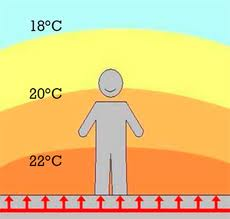 Radiant Emission Systems
Radiant Emission Systems